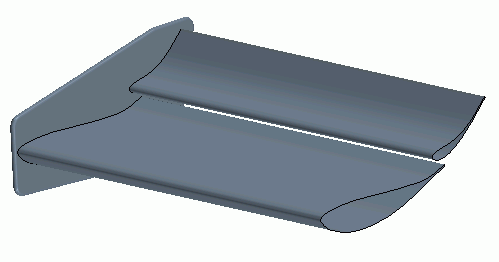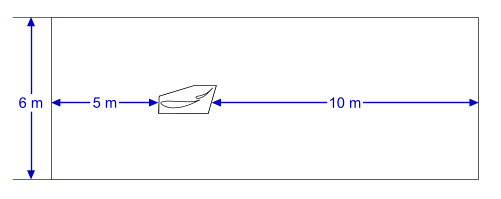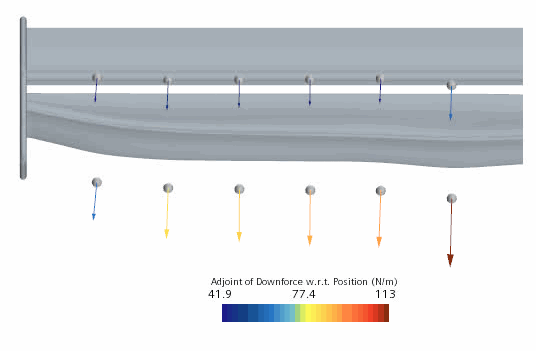Adjoint Shape Optimization: Mesh Sensitivity for Dual Element Wing
A typical application of an adjoint flow analysis is to use the computed gradients in a shape optimization study with respect to a chosen cost function. In Simcenter STAR-CCM+, simulation operations allow you to construct an automated pipeline for optimization studies without any need for Java macros.


For this tutorial, you are provided with a simulation file that contains the following objects already defined:
- An automated mesh operation with mesh settings. To keep the file size to a minimum, the volume mesh is not provided—the mesh is ready for you to generate.
- Geometry parts for the fluid domain surrounding the wing
- A physics continuum with physics models required for the initial flow solution. The Adjoint Flow model is activated in a later step.
- Initial conditions.
- Regions and boundaries (including the boundary types).
- A mesh scene.
In the simulation operation sequence, the primal flow is solved for 300 iterations. Afterwards you run an adjoint analysis. Sequentially, you define control points around the wings. The wing surface boundary is deformed using a morpher displacement as a function of the mesh sensitivity of the control points. See also Using Mesh Sensitivity on Control Points.
In particular, the tutorial shows how the shape of the lower element can be modified to increase the downforce generated by the wing.

You require a double-precision version of Simcenter STAR-CCM+ to complete this tutorial.